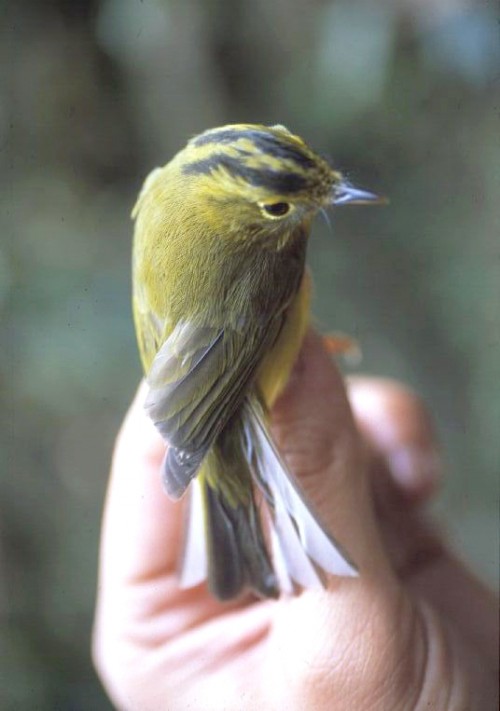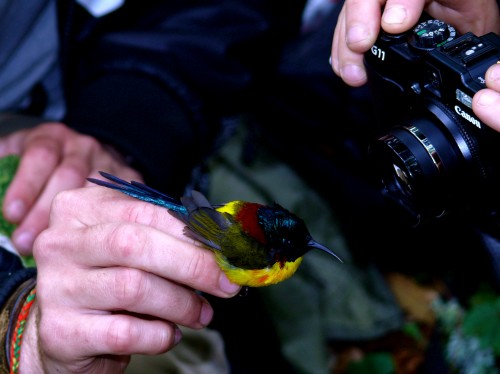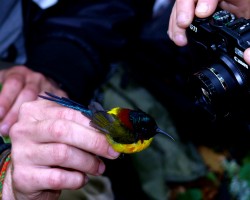There is a new song they sing and that’s what makes them unique. The results of the first ever mapping of birds in the eastern Himalayan region of India has confirmed that there are more than 360 different songbird species in the regions, most of which are not found anywhere else on the planet. Scientists add that the presence of so many species within this small geographical location may be the highest diversity of song birds in the world.

The Himalayan region that extends from Eastern Nepal to the borders of China, India and Myanmar echoes with the calls of more than 10,000 individual sounds from numerous species, as recorded by researchers. They found that in all there are 360 unique song birds species living here that are found nowhere else in the world.
Explained Dr. Trevor Price, research author and professor of ecology and evolution,
“As a group, the songbirds—species such as wrens, swallows, finches and crows—contain nearly half the world’s bird species. More than 460 can be found in the Himalayas and about 360 of these can be found in a restricted area of the eastern Himalayas, which we believe makes it the location with the highest numbers of songbirds anywhere in the world (a similar sized area in North America or Europe typically contains less than 100).”
Searching the Singular Songs
An international team of scientists from India, US, Germany and Sweden sampled and analyzed the DNA of all songbirds found in the Himalayas and compiled some of the genetic material over the course of decades. The painstaking process had them searching through old collections in European and North American museums and studying individual feathers collected by field workers.

They discovered that the birds of the area were not new species, but those that had emigrated from other regions and begun to live in the then newly formed Himalayas.
“As the Himalayan mountain range was formed, a profusion of completely different ecological niches were created,” explains Professor Jochen Martens of Johannes Gutenberg University Mainz (JGU), who has spent 45 years researching in the region and is the co-author of the study.
“A wide variety of different songbird species were able to colonize these niches. The majority of these species did not evolve there but emigrated from the eastern and south-eastern regions of the Himalayas.”
The young Himalayas provided a new home to the song birds. Later they adapted to differentiate themselves from their ancestors in the region at least in the manner they communicated.
The most surprising find of the team was the huge difference in the genetic makeup of the bird species from their closest relatives living in other regions. They believe that the separation led to changes in the birds and the manner in which they vocally communicated much like the difference between humans and chimpanzees that are believed to be our closest relatives.
The team also noted that over the past million years, no new emigration of a new species of bird from China, Southeast Asia or Siberia has occurred into the region. This may be because the unique song bird community living in the Eastern Himalayas is already well populated and there is no space available for another species.
“The capacity for new species to evolve appears to depend to a large extent on whether enough room for colonization is available,” explains Martens.
Sound in the DNA
The finding provides proof of the importance sounds play in separating similar species when evolution occurs. The recording of more than 10,000 different sounds of the song birds is ample evidence that evolution made them different from their close relatives through their chirps and songs.
The team now hopes that a similar study will be done on other animals living in the area like the reptiles and mammals, in this impressive location.
“It will only be possible to protect this natural heritage once it has been researched as thoroughly as possible,” adds Martens.
– Additional information by Atula Gupta
More Related Stories,
Which is the Heaviest Flying Bird in India?
World’s Highest Flying Bird May Hold Key to Prevention of Heart Attacks
Interview: Ramit Singal, In the World of Birds
Image courtesy Jochen Martens and sciencelife






One thought on “Scientists Find World’s Highest Number of Song Birds in the Himalayas”